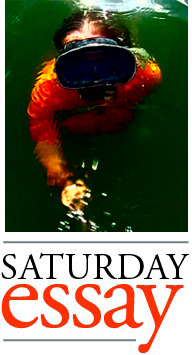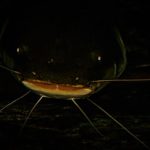Lake Superior Eats Lesser Bodies of Water for Breakfast
 Lake Superior is the biggest lake on Earth. And it’s the best. Want to fight about it?
Lake Superior is the biggest lake on Earth. And it’s the best. Want to fight about it?
If you’re like me, sometimes you mention Lake Superior in conversation, and you find yourself saying, “Lake Superior is the biggest lake in the world — by surface area! But if you’re judging by volume, the biggest lake is Lake Baikal!” But screw that. It’s time to take a stand. Now I say, “Lake Superior is the biggest lake in the world and those other janky lakes can suck it.”
What is a Lake?
The issue is nuanced, which triggers me. The definitions we use for lakes are arbitrary. I looked it up on Wikipedia and it just made me angry: “Lakes lie on land and are not part of the ocean.” Is it not obvious that oceans also lie on land? What is an ocean on, if not land? The ocean is not bottomless. The bottom of the ocean is land — they checked. Another irritating part of the definition is that lakes are “surrounded by land.” Now, don’t tell me oceans are not surrounded by land. There is no difference between oceans and lakes. The definition of a lake as “laying on/surrounded by the land” means oceans are, in fact, lakes.
What is a Pond?
You may be surprised to learn that “Lakes are typically larger and deeper than ponds, which also lie on land, though there are no official or scientific definitions.” Emphasis mine. The history of the human language has no official definition of the word “pond”? Ponds’ primary feature seems to be they lay on land. In other words, ponds are just oceans. If there’s no definition of ponds, does that mean a puddle is also an ocean — which, as we have already determined, is a lake?
What is a Sea?
Large bodies of water are sometimes called seas. What is a sea? Wikipedia says, “The sea is the interconnected system of all the Earth’s oceanic waters…. the word ‘sea’ can also be used for many specific, much smaller bodies of seawater… There is no sharp distinction between seas and oceans, though generally seas are smaller, and are often partly or wholly bordered by land.” Emphasis mine. So: the sea is the ocean, and all the oceans are the same ocean, which is the sea, but we call smaller parts of it “this or that ocean” and so forth. Including even smaller parts of it, like the measly North Sea, which is yet still the same water as the ocean with “no sharp distinction.” We have already shown that a puddle is an ocean, and an ocean is a lake, so, if the ocean is a sea, a lake is a puddle.
What is the Biggest Lake Already?
Now that we’ve done our own research so we know what we’re talking about, let’s look at our candidates.
The Caspian Sea: Oh Jesus Christ. This landlocked body of water used to be connected to the ocean, so it has a remnant salinity. It’s one-third as salty as a normal boring ocean. It used to have whales and dolphins and it still has seals. It has a surface area of 143,000 square miles, and a water volume of 18,800 cubic miles. Even though it is sometimes called the world’s biggest lake, what jumps out at me is that’s baloney. The Caspian Sea is not a lake, it is a failed and pathetic former ocean with an identity crisis. It must be disqualified.
Lake Michigan-Huron: This really pisses me off. It turns out Lake Huron and Lake Michigan are connected by the Straits of Mackinac, and they have been the entire time. They are, in fact, a single lake. Yet we have been forced to call them different names, playing pretend like we don’t want to hurt their feelings because we’re so woke. Is everything just lies? Counted as a single body, Lake Michigan-Huron has a surface area of 45,300 square miles, and a volume of 2,029 cubic miles. Lake Superior has more surface area (a massive 31,700 square miles) than Lake Michigan, and more surface area than Lake Huron, but, Lake Superior has less surface area than Lake Michigan-Huron. Arg! Luckily, in a total own, Lake Superior has more volume (2,900 cubic miles, think of it!) than Lake Michigan-Huron. Lake Superior drops Lake Michigan-Huron like a mixtape.
Lake Tanganyika: Wikipedia says this is an African Great Lake which threatens my fragile sense of Western hegemony. This lake is a “rift lake,” meaning it’s just a crack filled with water. Does that sound like a real lake? The answer must be no. A proper lake is a basin of water on the land, not a wet crack. Lake Tanganyika has a surface area of a puny 12,700 square miles, which would not be worth a mention if it did not contain an impressive volume of 4,500 cubic miles of water, some of which, pretentiously, contains crocodiles. Nice try.
Lake Baikal: Lake Superior could not possibly consider this janky-ass lake a worthy competitor. Like the Caspian Sea, Lake Baikal also has seals. This is a problem I plan to correct soon, with a proposal I am submitting to the Duluth Mayor’s office to stock Lake Superior with seals, and a complementary population of orca whales to keep them in check. Does Lake Baikal have orca whales? No. What it has is a surface area of 12,200 square miles, less than half of Lake Superior, haha. Baikal’s volume is 5,700 cubic miles, which sounds impressive until you consider it’s just another rift lake (Lake Superior flips hair, checks nails).
The Winner
Once we discount the oceans, disqualify the Caspian Sea, smile condescendingly at Lake Michigan-Huron, and dismiss the rift lakes, one champion remains. We now know Lake Superior is the only lake there is. It is bigger than a pond because it is an ocean unto itself, the greatest puddle. It is the biggest lake in the world, and the best. Other lakes can suck it.
An index of Jim Richardson’s essays may be found here.
Recommended Links:
Leave a Comment
Only registered members can post a comment , Login / Register Here














No Comments